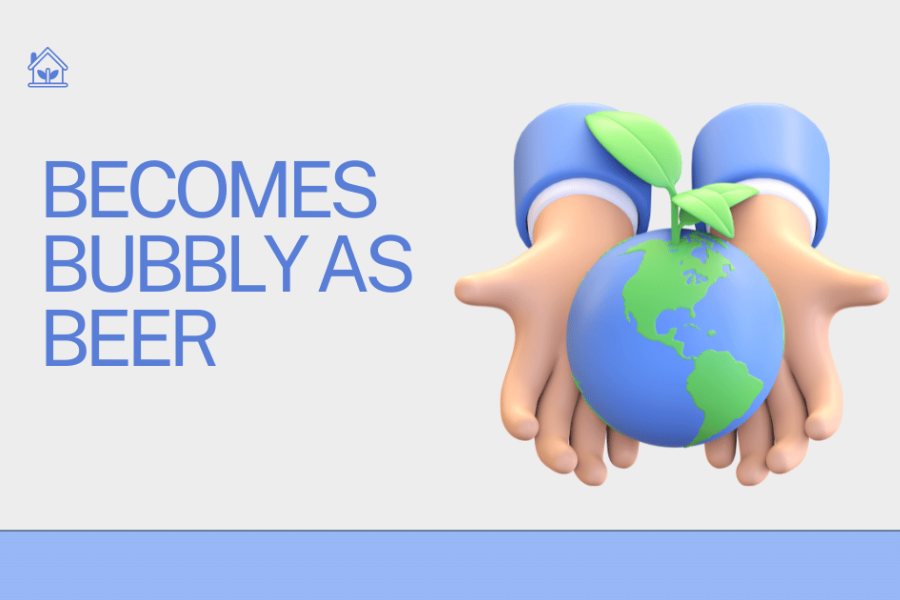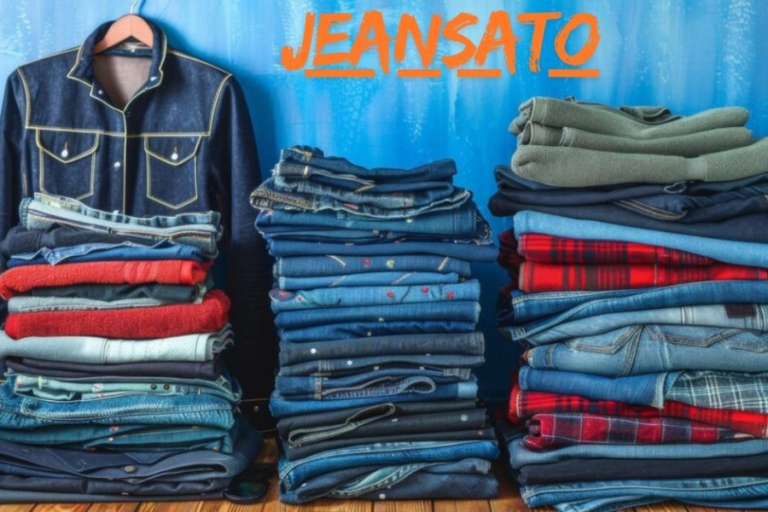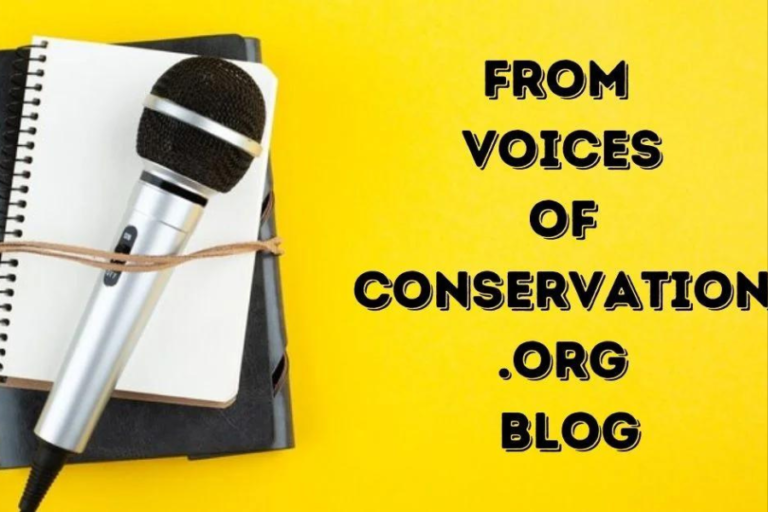NYT Crossword Tips: How to Decode ‘Becomes Bubbly as Beer’
Introduction
Crossword puzzles, particularly those found in the New York Times, are known for their cunning and some of the time precarious wit. A piece of information like “becomes bubbly as beer nyt” may appear to be direct from the get go, however it requires a more profound comprehension of crossword shows and methods. This article investigates how to move toward such hints, offering experiences and methodologies for tackling comparative riddles.
Understanding Crossword Hints: What Does “Becomes bubbly as beer nyt” Mean?
In crossword puzzles, hints are many times something beyond direct definitions. They might include quips, re-arranged words, equivalents, or even figurative language. The piece of information “becomes bubbly as beer nyt” is a perfect representation of pleasantry that expects solvers to think past the exacting importance.
While settling a sign like this, separating the components is fundamental:
“Becomes bubbly as beer” – This recommends a change or change, indicating that the response includes an interaction or a condition.
“Effervescent” – This word is vital to the hint. It very well may be alluding to something bubbly or something enthusiastic and ready to go.
“As Lager” – This correlation shows that the response will connect with something that acts like brew in becoming effervescent, possibly alluding to carbonation or foam.
Considering this investigation, the response may be an action word or descriptor that catches the method involved with becoming effervescent, similar as how lager gets its bubble. “Froths” or “FROTHS” could be the arrangement, as these portray the activity or condition of becoming effervescent, which is precisely exact thing brew does.
The Specialty of Crossword Pleasantry: Perceiving Examples and Traps
Wit is at the core of numerous crossword puzzles, particularly in distributions like the New York Times. Solvers should be aware of various kinds of wit that can transform an apparently direct hint into a puzzle:
- Quips: Jokes play right this minute implications of words. For our situation, “effervescent” could allude to the strict air pockets in brew or to something that shows comparable characteristics, for example, “bubbles.”
- Equivalents and Doublespeaks: Some of the time, the response is an equivalent or a doublespeak for the words in the hint. For example, “froths” is an equivalent word for becoming effervescent.
- Twofold Implications: Words like “brew” could prompt contemplating explicit kinds of lager or fixings, yet here it essentially addresses the possibility of something that air pockets.
Crossword constructors, particularly those at the NYT, are known for their capacity to wind around these components together, moving solvers to check out at each word and its potential implications.
Systems for Addressing Interesting Crossword Hints Like “Becomes bubbly as beer nyt”
To effectively tackle signs like “Becomes Effervescent as Brew nyt,” an essential methodology is important:
- Break down the Piece of information Design: Begin by recognizing whether the sign is an immediate definition, an enigmatic hint, or includes pleasantry. For this situation, the piece of information is reasonable a wit or a spellbinding expression.
- Think about the Length of the Response: Crossword puzzles give the quantity of letters in the response, which can assist with reducing prospects. For instance, on the off chance that the response is five letters, “Froths” turns into areas of strength for a.
- Consider Equivalents: Assuming that the sign is unmistakable, conceptualize equivalent words for catchphrases. For “effervescent,” consider “frothy,” “bubbly,” “foamy,” or even “shines.”
- Use Crossword Examples: The letters from currently addressed signs can direct you toward the right response. Assuming that you have letters like “F” and “M” perfectly positioned, “Froths” turns out to be more clear.
- Think about Well known Expressions: Some of the time, the response is essential for a typical expression or colloquialism. In this case, “froths” could squeeze into an expression like “brew froths.”
Investigating the NYT Crossword: Why “Becomes bubbly as beer nyt” Sticks Out
The New York Times crossword is venerated for its capacity to offset trouble with pleasure, offering puzzles that challenge solvers while compensating them with “aha” minutes. The piece of information “Becomes bubbly as beer nyt” is an exemplary illustration of the NYT’s way to deal with crossword development.
This hint probably stands apart on the grounds that it consolidates effortlessness with a cunning turn. It welcomes solvers to contemplate a typical interaction — lager becoming effervescent — yet expects them to make an interpretation of that cycle into a succinct, fitting word. The piece of information is a demonstration of the expertise of NYT crossword constructors, who specialty signs that are drawing in, testing, and at last fulfilling to tackle.
Normal Crossword Puzzle Procedures to Dominate
To become capable at addressing signs like “Becomes bubbly as beer nyt,” it is fundamental to see some normal crossword methods:
- Re-arranged words: A hints include improving letters to frame the response. While “Becomes bubbly as beer nyt” isn’t a re-arranged word, perceiving this procedure is significant for different riddles.
- Secret Words: Once in a while, the response is concealed inside the actual hint. However not relevant here, hints like “Becomes bubbly as beer nyt” may conceal words in different settings.
- Inversions: A hint could expect you to consider a word in reverse. For instance, on the off chance that a sign indicated something being “pushed,” the response could be “treats.”
- Homophones: A hint might allude to words that sound the same yet have various implications. For instance, a piece of information could utilize “brews” to indicate “bears.”
How Crossword Riddles Improve Mental Abilities
Crossword puzzles, particularly those in regarded distributions like the NYT, are something other than a distraction; they offer critical mental advantages. Addressing puzzles upgrades jargon, further develops critical thinking abilities, and hones memory. Signs like “Becomes bubbly as beer nyt” expect solvers to participate in horizontal reasoning, making associations between apparently irrelevant ideas.
The test of tackling such riddles lies yet to be determined among information and instinct. As solvers experience more signs and riddles, they start to perceive designs, making it simpler to unravel even the most secretive of clues. This continuous mental activity isn’t just charming yet additionally gainful for keeping up with mental wellbeing.
Tips for Novices: How to Handle the NYT Crossword
For those new to the universe of crosswords, the NYT puzzle could appear to be overwhelming. Be that as it may, with the right methodology, even novices can begin settling complex signs like “Becomes bubbly as beer nyt”:
Begin with the Simple Hints: Start by settling the more straightforward pieces of information to gather speed. This will give you more letters to work with for the additional difficult hints.
Search for Normal Crossword Words: A few words show up as often as possible in crosswords. Find out about these to make tackling speedier.
Practice Everyday: The more riddles you address, the better you’ll turn into. Everyday practice helps in perceiving various kinds of wit and sign designs.
Use Crossword Solvers Sparingly: While online apparatuses can help, attempt to depend on your abilities first. These instruments can affirm surmises however shouldn’t supplant the settling system.
Join a Crossword People group: Drawing in with other crossword lovers can give significant experiences and tips. Online gatherings and gatherings are incredible spots to talk about troublesome signs and arrangements.
The crossword hint “Becomes bubbly as beer NYT” is an ideal illustration of the shrewd wit that makes settling puzzles so fulfilling. By understanding the subtleties of crossword hints, perceiving designs, and applying vital reasoning, solvers can unravel even the trickiest of riddles. Whether you’re a carefully prepared crossword enthusiast or simply starting, dominating signs like this will improve your satisfaction and enthusiasm for the specialty of crossword puzzles.
Crossword puzzles, particularly those found in the New York Times, are known for their astute and some of the time precarious pleasantry. A sign like “Becomes bubbly as beer nyt” may appear to be clear from the outset, however it requires a more profound comprehension of crossword shows and methods. This article investigates how to move toward such signs, offering bits of knowledge and techniques for addressing comparable riddles.
Understanding Crossword Hints: What Does “Becomes bubbly as beer nyt” Mean?
In crossword puzzles, signs are in many cases something beyond direct definitions. They might include jokes, re-arranged words, equivalents, or even allegorical language. The hint “Becomes bubbly as beer nyt” is a perfect representation of wit that expects solvers to think past the exacting importance.
While tackling a piece of information like this, separating the components is fundamental:
“Becomes bubbly as beer” – This recommends a change or change, implying that the response includes an interaction or a condition.
“Effervescent” – This word is vital to the sign. It very well may be alluding to something bubbly or something energetic and ready for business.
“As Brew” – This correlation demonstrates that the response will connect with something that acts like lager in becoming effervescent, possibly alluding to carbonation or foam.
Considering this examination, the response may be an action word or modifier that catches the most common way of becoming effervescent, similar as how brew gets its bubble. “Froths” or “FROTHS” could be the arrangement, as these portray the activity or condition of becoming effervescent, which is precisely exact thing lager does.
The Specialty of Crossword Pleasantry: Perceiving Examples and Traps
Wit is at the core of numerous crossword puzzles, particularly in distributions like the New York Times. Solvers should be aware of various sorts of pleasantry that can transform an apparently direct hint into a puzzle:
- Jokes: Quips play as soon as possible implications of words. For our situation, “effervescent” could allude to the exacting air pockets in brew or to something that shows comparable characteristics, for example, “foams.”
- Equivalents and Doublespeaks: Once in a while, the response is an equivalent word or a doublespeak for the words in the hint. For example, “froths” is an equivalent for becoming effervescent.
- Twofold Implications: Words like “lager” could prompt contemplating explicit kinds of brew or fixings, however here it just addresses the possibility of something that air pockets.
Crossword constructors, particularly those at the NYT, are known for their capacity to wind around these components together, moving solvers to check out at each word and its potential implications.
Systems for Settling Precarious Crossword Signs Like “Becomes bubbly as beer nyt”
To effectively settle signs like “becomes bubbly as beer nyt,” an essential methodology is vital:
Examine the Piece of information Design: Begin by distinguishing whether the sign is an immediate definition, a mysterious hint, or includes pleasantry. For this situation, the sign is possible a wit or an elucidating expression.
Think about the Length of the Response: Crossword puzzles give the quantity of letters in the response, which can assist with reducing prospects. For instance, on the off chance that the response is five letters, “Froths” turns into areas of strength for a.
Consider Equivalents: On the off chance that the piece of information is enlightening, conceptualize equivalents for watchwords. For “effervescent,” consider “frothy,” “bubbly,” “foamy,” or even “shines.”
Use Crossword Examples: The letters from currently settled signs can direct you toward the right response. Assuming you have letters like “F” and “M” perfectly located, “Froths” turns out to be more evident.
Think about Well known Expressions: Some of the time, the response is important for a typical expression or phrase. In this occurrence, “froths” could squeeze into an expression like “lager froths.”
Investigating the NYT Crossword: Why “becomes bubbly as beer nyt” Sticks Out
The New York Times crossword is adored for its capacity to offset trouble with pleasure, offering puzzles that challenge solvers while compensating them with “aha” minutes. The hint “Becomes bubbly as beer nyt” is an exemplary illustration of the NYT’s way to deal with crossword development.
This sign probably stands apart on the grounds that it joins effortlessness with a shrewd wind. It welcomes solvers to ponder a typical cycle — lager becoming effervescent — however expects them to make an interpretation of that interaction into a succinct, fitting word. The hint is a demonstration of the expertise of NYT crossword constructors, who specialty pieces of information that are drawing in, testing, and at last fulfilling to settle.
Normal Crossword Puzzle Strategies to Dominate
To become capable at tackling signs like “Becomes bubbly as beer nyt,” it is fundamental to see some normal crossword strategies:
Re-arranged words: A signs include improving letters to frame the response. While “Becomes bubbly as beer nyt” isn’t a re-arranged word, perceiving this method is significant for different riddles.
Secret Words: In some cases, the response is concealed inside the actual hint. However not material here, signs like “Becomes bubbly as beernyt” may conceal words in different settings.
Inversions: A sign could expect you to consider a word in reverse. For instance, on the off chance that a piece of information indicated something being “pushed,” the response could be “treats.”
Homophones: A piece of information might allude to words that sound the same however have various implications. For instance, a sign could utilize “lagers” to indicate “bears.”
How Crossword Riddles Upgrade Mental Abilities
Crossword puzzles, particularly those in regarded distributions like the NYT, are something beyond a diversion; they offer huge mental advantages. Settling puzzles upgrades jargon, further develops critical thinking abilities, and hones memory. Hints like “Becomes bubbly as beer nyt” expect solvers to take part in horizontal reasoning, making associations between apparently irrelevant ideas.
The test of addressing such riddles lies yet to be determined among information and instinct. As solvers experience more pieces of information and riddles, they start to perceive designs, making it simpler to decipher even the most mysterious of clues. This continuous mental activity isn’t just pleasant yet in addition gainful for keeping up with mental wellbeing.
Tips for Fledglings: How to Handle the NYT Crossword
For those new to the universe of crosswords, the NYT puzzle could appear to be overwhelming. Be that as it may, with the right methodology, even novices can begin addressing complex signs like “Becomes bubbly as beer nyt”:
- Begin with the Simple Signs: Start by addressing the more straightforward hints to gather speed. This will give you more letters to work with for the additional difficult pieces of information.
- Search for Normal Crossword Words: A few words show up often in crosswords. Look into these to make tackling speedier.
- Practice Everyday: The more riddles you address, the better you’ll turn into. Everyday practice helps in perceiving various sorts of pleasantry and sign designs.
- Use Crossword Solvers Sparingly: While online instruments can help, attempt to depend on your abilities first. These devices can affirm surmises however shouldn’t supplant the settling system.
- Join a Crossword People group: Drawing in with other crossword fans can give significant bits of knowledge and tips. Online gatherings and gatherings are extraordinary spots to talk about troublesome signs and arrangements.
The crossword sign “Becomes bubbly as beer NYT” is an ideal illustration of the shrewd wit that makes settling puzzles so fulfilling. By understanding the subtleties of crossword pieces of information, perceiving designs, and applying key reasoning, solvers can unravel even the trickiest of riddles. Whether you’re a carefully prepared crossword devotee or simply starting, dominating signs like this will upgrade your happiness and enthusiasm for the specialty of crossword puzzles.
Summary:
The phrase “becomes bubbly as beer” refers to the process of a liquid forming bubbles, similar to how beer becomes fizzy due to carbonation. This bubbling effect in beer is primarily caused by carbon dioxide (CO2) produced during fermentation, where yeast converts sugars into alcohol and CO2. The release of CO2 creates the characteristic bubbles and foam when beer is poured or opened.
Carbonation plays a significant role in the taste and texture of beer, enhancing its mouthfeel and making flavors more pronounced. Different factors, such as the type of beer, brewing process, temperature, and the glass used, influence how bubbly a beer becomes. Other beverages like sparkling water, soda, and champagne can also achieve a similar bubbly effect through carbonation.
Temperature affects carbonation levels, with colder temperatures maintaining the bubbles longer, while warmer conditions cause the CO2 to escape, leading to a flat beer. Proper storage, gentle pouring, and using clean glasses can help keep beer bubbly for an extended period.
Overall, carbonation is a key aspect of beverages, creating a refreshing and enjoyable experience that is widely appreciated.
FAQs
What does “becomes bubbly as beer” mean?
“Becomes bubbly as beer” refers to the process where a liquid or substance starts to fizz or form bubbles similar to those seen in carbonated drinks like beer, often due to the release of gases like carbon dioxide.
What causes beer to become bubbly?
The bubbles in beer are primarily caused by carbon dioxide (CO2) produced during the fermentation process. When beer is poured or opened, the CO2 escapes, forming bubbles that create the characteristic fizz.
How does carbonation affect the taste of beer?
Carbonation enhances the beer’s mouthfeel, adds a refreshing quality, and can influence the perception of flavors, making some tastes, like bitterness or sweetness, more pronounced.
Can other beverages become as bubbly as beer?
Yes, other beverages such as sparkling water, soda, champagne, and some fermented drinks like kombucha can also become bubbly due to the presence of dissolved CO2 or natural fermentation.
Why do some beers have more bubbles than others?
The level of carbonation in beer depends on factors like the type of beer, brewing process, and the amount of CO2 added. Lighter beers often have more bubbles, while darker, heavier beers like stouts may have less.
What is the role of yeast in making beer bubbly?
Yeast plays a crucial role in fermentation, converting sugars into alcohol and CO2. The CO2 produced during this process is what gives beer its bubbly nature.
Why does beer foam when poured?
Beer foams when poured due to the release of CO2 when the liquid is agitated. The bubbles rise to the surface, creating a foam or “head,” which is influenced by factors like temperature, pouring technique, and the glass used.
Can beer lose its bubbles?
Yes, beer can lose its bubbles, a process known as going flat. This can happen if the beer is left open for too long, improperly stored, or exposed to heat, causing the CO2 to escape.
Is it possible to make non-alcoholic beverages as bubbly as beer?
Absolutely! Non-alcoholic beverages can be carbonated by adding CO2, just like beer. Sparkling water, non-alcoholic beers, and sodas are all examples of bubbly non-alcoholic drinks.
What impact does temperature have on beer’s bubbles?
Temperature affects carbonation levels; colder temperatures keep CO2 dissolved in the beer, preserving the bubbles, while warmer temperatures cause CO2 to escape more quickly, reducing fizz.
Why do some beers create larger bubbles than others?
Bubble size in beer depends on the CO2 level, the composition of the beer, and factors like protein content, which can stabilize or destabilize the bubbles.
How can you keep beer bubbly for longer?
To keep beer bubbly, store it in a cool place, keep the container sealed, and pour gently to preserve the carbonation. Using clean glasses without residue also helps maintain the bubbles.
Does the type of glass affect how bubbly a beer becomes?
Yes, the type of glass can influence how bubbly a beer appears. Glasses with nucleation points (tiny imperfections) can encourage bubble formation, enhancing the beer’s visual appeal.
Stay informed about celebrity events and happenings on SyncTimes.co.uk.






